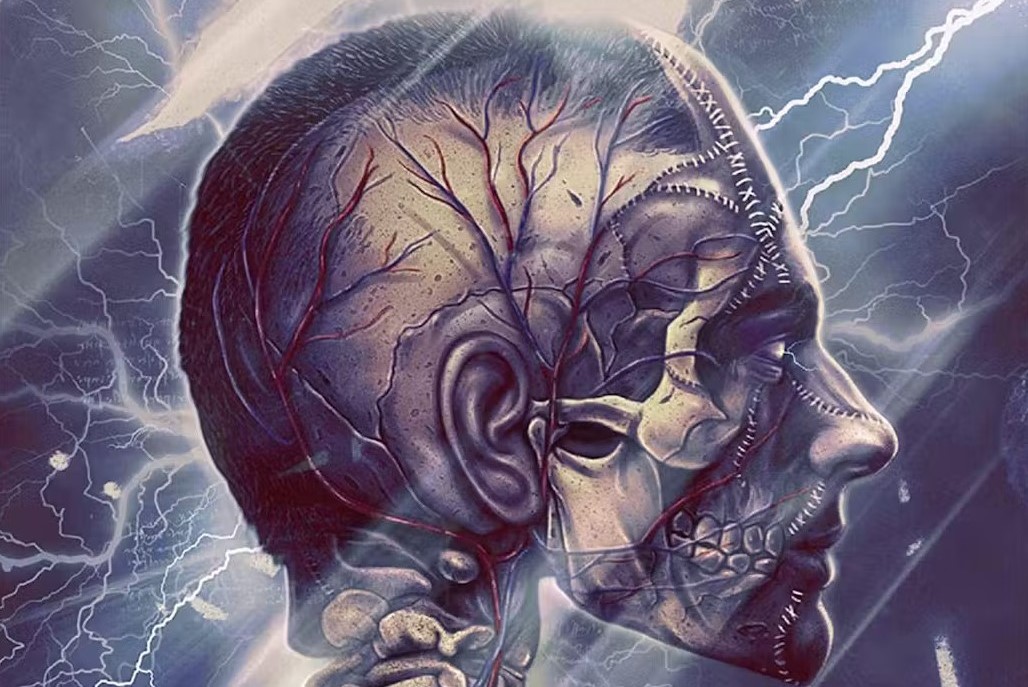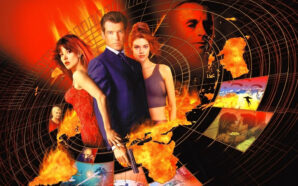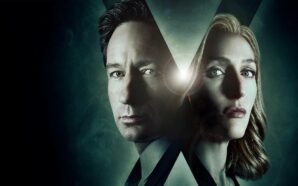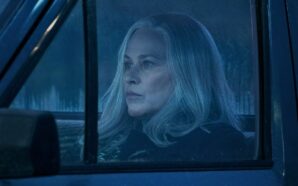Frankenstein is one of the most adapted pieces of literature, with seemingly endless film versions. We’re getting two more high-profile efforts in just the next year alone, from Guillermo del Toro and Maggie Gyllenhaal. The 1818 novel by teenager Mary Shelley not only created our understanding of the horror genre but science fiction, too. Yet, across these film adaptations, like a game of Chinese whispers, the essence of the novel has slowly worn away. Then, 30 years ago this year, one film attempted to deliver an actual, faithful adaptation: Mary Shelley’s Frankenstein.
It should probably be called Francis Ford Coppola’s Kenneth Branagh’s Mary Shelley’s Frankenstein. The film has the distinction of being the first film version of the story I ever saw, although it’s impossible to be unaware of others through popular culture. We watched the film in English class at school, because if the author’s name is in the title it’s basically the same as reading the book, right? Although we fast-forwarded through the sex scene, of course. The other film we watched was Volcano with Tommy Lee Jones; I don’t have an explanation for that one.
I remember really liking it at the time and now, revisiting it, it’s a fun but flawed endeavour. It’s certainly closer to the book than other adaptations but it it’s only through comparison with them that plonking Shelley’s name in the title is forgivable. It still makes copious changes. The film actually begins with a quote by Mary Shelley from her introduction to the 1831 republished edition, about her aim to terrify the reader. It’s a bizarre quote to pick for this specific adaptation is because it’s not scary in the least.
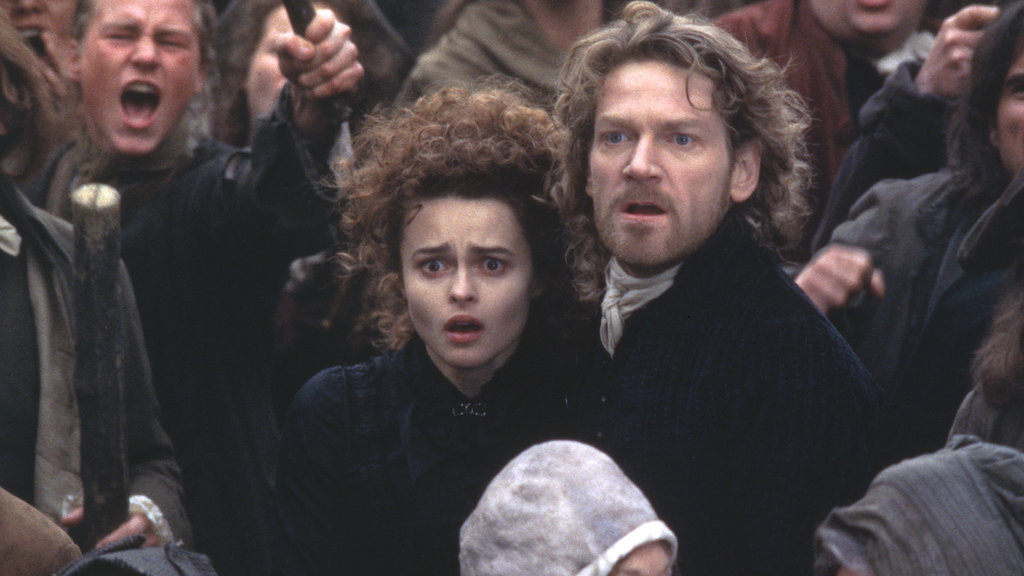
It’s not that Mary Shelley’s Frankenstein is a failure of a horror film. It’s that it’s not trying to be a horror film. It’s a great big silly melodrama. Everything is preposterously overly emotional. An almightily unsubtle attempt to capture some of the gothic romanticism. If there’s a way for characters to scream “NO!” while running in the pouring rain, this film will find it. Kenneth Branagh, the director and star, is over the top in both his duties. The camera swings and spins in insane moves while his version of Victor Frankenstein speaks and moves just as fast. It’s like his attempt to play a younger character than his actual age (with an actress who looks about the same age portraying his mother) comes down to just being very energetic about everything. There’s real urgency to a lot of the film, which works in some moments and not in others. It’s like film is a stage play that started late and everyone is rushing through it so they can still finish in time for dinner.
A highlight of the film is how firmly entrenched it is in a time and place. This isn’t some nebulous European old world-y location in some undefined era like the classic James Whale Frankenstein films. Mary Shelley’s Frankenstein works as an almost historical drama, set in Geneva in 1794. The production design and costuming is wonderful. The main Geneva set, which comprises of several streets and buildings is truly remarkable. There’s also a very grand staircase in the Frankenstein family home, although perhaps more befitting Dracula’s castle, that is at once spectacular and absolutely anxiety-inducing when anyone is climbing it near the edge. The scariest part of the movie is nothing to do with the monster but Ian Holm giving a shoulder ride to a young child on the precarious staircase. The scene of John Cleese, sporting a fake chin and teeth for some reason, getting stabbed to death by an anti-vaxxer feels much more relevant in the present day, however.
The big issue holding the movie back is that is has a monster problem. Or a “creature” problem, as the film names him. It begins well enough. The creation scene is dynamic and has a unique enough spin on the much parodied moment. The ‘Wallace and Gromit’ contraption to move the body is the right level of silly, although the use of electric eels instead of lightning feels like it’s trying a little too hard. The scene plays very much like a childbirth, which I like a lot. Frankenstein and his creation flopping around in amnionic fluid for a couple of minutes. But then the issues begin. Victor immediately rejects the creature and tries to kill it. The switch from joy to horror is immediate. It’s far too rushed and unclear, the first sign that the film itself cares little for the monster.
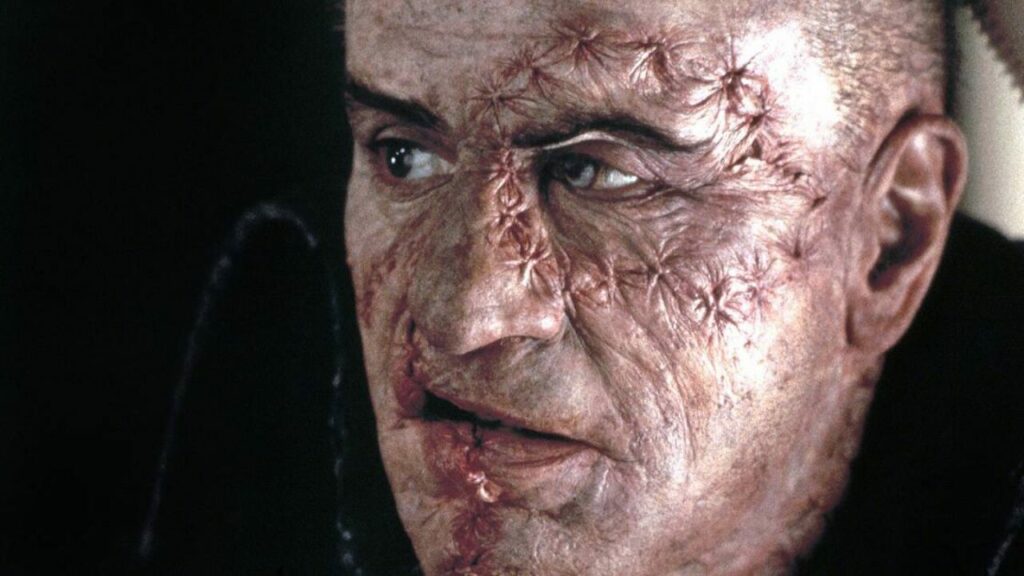
You know you’ve made a mistake when the worst part about your Frankenstein movie is the monster. Robert De Niro delivers a good performance as the most book accurate version of the character we’ve seen on film. He’s a tragic and poetic figure, capable of broken speech and comprehension of his situation. But the film too often forgets about him when he’s not onscreen. He’s rarely a propulsive part of the plot. We get the moments of him helping the family and bonding with the blind man, which is such a brilliant scene in Bride of Frankenstein, and it’s good here but too rushed. I wanted to spend longer with him. The storyline is whizzed through as quickly as possible, setting up his character’s turn towards darkness after the family rejects him in the briefest amount of time possible. I never connected to the character as much as I wanted.
While having a greater sense of self-awareness and intelligence than most Frankenstein’s monsters, De Niro’s version isn’t without super strength and the capacity for violence. He also can jump dramatically in slow motion. But we never get to see the violence and strength used effectively. The character works so well in other versions by balancing our sympathy for him with violent and terrifying acts. Branagh’s film is too concerned with making us empathic towards the creature that it shies away from his actions. The monster intentionally murders a child in the film. But it happens offscreen. The film feels safer than the 1931 version. We need to see the monster do these things and Branagh’s trepidation hurts the film. Thinking back, I don’t think we see him kill anyone other than Elizabeth. Ian Holm dies in bed and I get the sense he died of fright having seen the creature rather than was actively murdered by him.
The root of these monster problems is that Branagh wanted the film to be a tragic love story between Victor and his adopted sister/lover Elizabeth, who has a far greater role than she does in the book. The film is their journey. The monster could be cut almost entirely and little would change. He could die immediately after his birth and then Elizabeth could die in some other way at the end, causing Victor, due to his twisted love and insanity, wanting to resurrect her on his own terms. The creature forces Victor’s hand at the end but that’s his only role. This film is Frankenstein’s story, the man, not the monster’s. Branagh takes this too far and places too little focus on the monster, instead concerned with his own character’s screentime and arc.
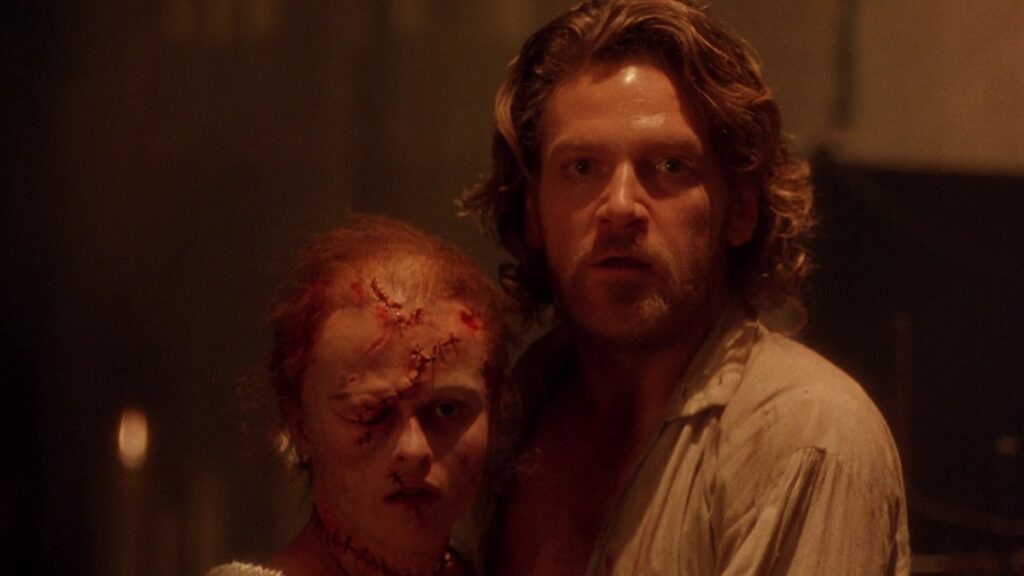
The brief moments with the resurrected Elizabeth are well done. It’s a solid conclusion with a great performance by Helena Bonham-Carter. The anguish at her new state of being, and the two men’s reactions to it are very good and I wish the rest of the film could match its quality. I also like the change in Elizabeth’s fate from the book. Here she sets herself alight, just like the creature does in the film’s final moments. It’s in keeping with the book’s mythological inspiration that promethean fire should end both their lives.
The film is bookended by Victor telling his tale to an explorer, another pioneer of human endeavour, out to quench his own hubris, in the arctic. Victor dies, along with his creation, and the explorer turns back. I like its inclusion and Branagh’s attempt to stick closer to the novel than most. Putting Shelley’s name in the title might still be a stretch Mary Shelley’s Frankenstein still remains the most faithful adaptation. Less so a successful film, however. I do enjoy it but it has its problems. The melodramatic and operatic tendencies are exhausting and the monster, somehow, one of the weakest elements because Branagh focused too much on his own character. We can hope Branagh learned something about hubris from his creation just as Frankenstein did from his.




